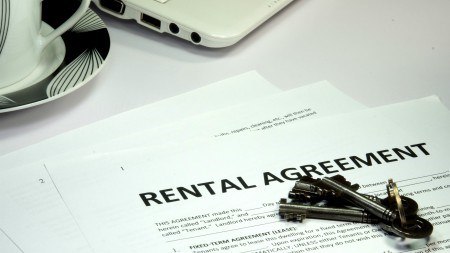Acquiring buy-to-let properties within the investment portfolio offers long-term capital growth while providing short and medium-term income from tenants occupying the house.
However, a property can be beautifully designed and in a highly desirable areas, but if tenants are not correctly managed and the occupancy not maintained at sufficiently high levels, the profitability of that rental property will collapse.
Unhappy tenants vacate at the end of their leases if not beforehand. This reduces the income due to unpaid rents and incurs costs in finding new tenants either via advertising fees or in the commissions paid to agents for vetting potential new tenants.
Those fees are paid upfront and amortised over the period tenants occupy the residence - and basic logic and mathematics show the return on investment is boosted the longer that initial payment covers a single tenant's stay.
In this vein, effective tenant management involves good rental collection practices; responsive handling of repairs and maintenance; a consistent and fair enforcement of regulations and regular and informative communications with tenants.
Rental collection as a real estate property manager does not start on the date rents are due. Rather, the process begins when tenants complete their rental applications - providing glowing rental references and passing the requisite credit checks - are the principle steps in ensuring rents are paid on time.
The next step is a sound lease agreement that clearly lays out the date (and time) rents are due; where the rents have to be paid and what happens if tenants do not adhere to these restrictions. Taking legal action and bringing about an eviction may become the final outcome of poor tenant management or selection.
Yet, even good tenants can fall on hard times and good property management means having a clear understanding with the owner on how much latitude can be granted in those situations. When buy-to-let owners have long-term, essentially sound, tenants in their properties, there is merit in working together and coming to an agreement on unpaid rentals for the sake of retaining that tenant.
However, obtaining and securing long-term tenant retention and thus acceptable levels of return on investment demands work from the owner. Properly maintaining that investment requires regular ongoing and preventive maintenance to the property with the same - if not greater - levels of enthusiasm as displayed in retaining the primary residence.
This means repairing, not only superficially band-aiding, problems or malfunctions and undertaking construction or remodelling when the time comes. Preventative and ongoing maintenance requires a thorough knowledge of the property, its demands for upkeep, staffing required to accomplish the tasks and budgeting for accomplishing them.
It means balancing the costs of routine and preventative maintenance with the benefits and expected results. Routine maintenance includes cleaning common areas; maintaining the landscape; regularly servicing the heating and air-conditioning systems; periodically inspecting the plumbing and electrical items and properly maintaining the wood, roofing and other building components.
Corrective action is required when things break or cease functioning as intended. Sometimes those repairs are emergency ones such as when the geyser floods, but others can and should be scheduled and undertaken efficiently. Professional property management requires differentiating between the two and effectively servicing tenant's needs while balancing the costs.
It is also essential to take to heart the adage "a stitch in time" and take care of the smaller problems before they escalate into large, potentially exponentially more expensive, ones. Every building requires construction and remodelling during its lifetime and buy-to-let properties are no exception. These issues may arise when accommodating special business requirements for commercial tenants; correcting obsolescence within the structure or accommodating special physical needs for a tenant.
Offering tenants a consistent and fair enforcement of regulations - be they the body corporate regulations to which they are entitled a copy before moving into a sectional title complex or the intricacies of the agreed rental agreement - means both parties have the platform from which to interact within the business arrangement.
Equally important is regular and informative communications with tenants. It may be only fair to pass on information concerning their welfare that emerges from the annual body corporate meetings or letting them know well in advance should you, as the owner, be looking to sell the property.
There are few things more unnerving or likely to damage owner-tenant relationships than having the estate agent knock on the door with prospective buyers without the tenant even knowing their home may be sold from under their feet.
Real estate property management demands being effective and efficient on every level and function, because dropping the ball on one area like facility maintenance, translates into a degradation of the building's condition, a loss of tenants and declining rents. It can merely become a vicious circle.



